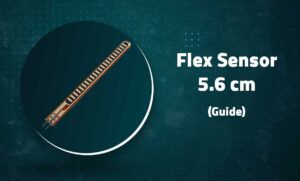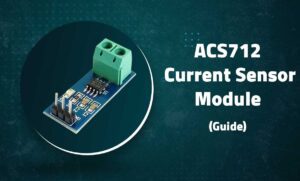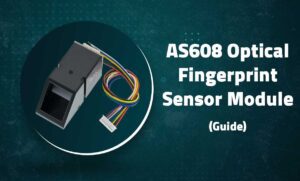XKC-Y25-V Non-Contact Water Liquid Level Sensor
XKC-Y25-V Non-Contact Water Liquid Level Sensor
Capacitive Detection Without Physical Contact
Introduction
The XKC-Y25-V is a non-contact liquid level sensor that detects water presence through capacitive sensing without direct contact with the liquid. This makes it ideal for applications requiring hygienic measurement or where sensor corrosion is a concern.
 Key Features
Key Features
Non-Contact
Detects through container walls without liquid contact
Digital Output
Simple HIGH/LOW signal for water detection
Low Power
Operates at 3.3V-5V with minimal current draw
Adjustable
Sensitivity control via potentiometer
Technical Specifications
| Operating Voltage | 3.3V – 5V DC |
|---|---|
| Output Type | Digital (TTL) |
| Detection Method | Capacitive (non-contact) |
| Max Container Thickness | 5mm (plastic/glass) |
| Current Consumption | <15mA |
| Response Time | <100ms |
| Operating Temperature | -10°C to +50°C |
| Protection Rating | IP65 (sensor only) |
Pin Configuration

| Pin | Label | Description | Arduino Connection |
|---|---|---|---|
| 1 | VCC | Power (3.3V-5V) | 5V |
| 2 | GND | Ground | GND |
| 3 | OUT | Digital output | D2 |
| 4 | EN | Enable pin (optional) | D3 (or leave unconnected) |
Note: The sensor must be mounted flush against the container’s outer surface for proper operation
Wiring with Arduino
// Basic Connections: // VCC → 5V // GND → GND // OUT → D2 (digital input) // Optional: // EN → D3 (digital output for enable/disable) // Mount sensor against container wall // Adjust sensitivity potentiometer as needed
Important: Container material must be non-metallic (plastic/glass) for proper detection
Basic Water Detection Example
// XKC-Y25-V Water Level Sensor Basic Example
const int sensorPin = 2;
void setup() {
Serial.begin(9600);
pinMode(sensorPin, INPUT);
}
void loop() {
int waterDetected = digitalRead(sensorPin);
if (waterDetected == HIGH) {
Serial.println("Water detected!");
} else {
Serial.println("No water detected");
}
delay(500);
}
Advanced Features
Sensitivity Adjustment
// Physical adjustment via potentiometer:
// 1. Apply water to desired detection level
// 2. Slowly rotate potentiometer until LED changes state
// 3. Test with varying water levelsEnable Control
// Power saving with enable pin
void setup() {
pinMode(EN_PIN, OUTPUT);
}
void takeMeasurement() {
digitalWrite(EN_PIN, HIGH);
delay(50); // Allow stabilization
bool waterPresent = digitalRead(SENSOR_PIN);
digitalWrite(EN_PIN, LOW);
return waterPresent;
}Multiple Sensors
// Monitor multiple levels
void checkLevels() {
bool lowLevel = readSensor(LOW_SENSOR);
bool highLevel = readSensor(HIGH_SENSOR);
if (highLevel) Serial.println("Tank full");
else if (lowLevel) Serial.println("Tank half full");
else Serial.println("Tank empty");
}Debounce Logic
// Prevent rapid state changes
bool stableRead(int pin) {
int count = 0;
for (int i = 0; i < 5; i++) { if (digitalRead(pin)) count++; delay(10); } return count >= 3;
}Troubleshooting
No Detection
- Check container material is non-metallic
- Adjust sensitivity potentiometer
- Ensure sensor is flush against container
False Positives
- Reduce sensitivity
- Check for condensation on container
- Move away from electrical noise sources
Inconsistent Readings
- Clean sensor surface
- Ensure stable power supply
- Implement software debouncing
Related Posts
MG90S Mini Digital 180° Servo
MG90S Mini Digital 180° Servo
Metal Gear, 2.2kg·cm Torque for RC and Robotics
Introduction
The MG90S is a compact di...
Waterproof Ultrasonic Obstacle Sensor, Sensor with Separate Probe
+
Waterproof Ultrasonic Obstacle Sensor
Distance Measurement with Separate Waterproof Probe
Introduction
The Wa...
Water Level Depth Detection Sensor
Water Level Depth Detection Sensor
Liquid Measurement for Arduino and IoT Projects
Introduction
The Water Level Dept...
VL53L0X Purple Laser Distance Sensor Module
VL53L0X Laser Distance Sensor Module
High-Speed, High-Precision Time-of-Flight Distance Measurement
Introduction
The...
TCS34725 RGB Color Sensor Module
TCS34725 RGB Color Sensor Module
High-Accuracy Digital Color Detection with IR Filter
Introduction
The TCS34725 is a...
TCS3200 Color Sensor Module
TCS3200 Color Sensor Module
Precise RGB Color Detection for Arduino and Embedded Projects
Introduction
The TCS3200 C...
PN532 NFC RFID Read/Write Module V3 Kit
PN532 NFC RFID Read/Write Module V3 Kit
Advanced Near Field Communication for Arduino and Embedded Systems
Introducti...
HC-SR501 PIR Motion Sensor Module
HC-SR501 PIR Motion Sensor Module
Passive Infrared Detection for Security and Automation Projects
Introduction
The H...
Flex Sensor 5.6 cm (Detect Bending Motion)
Flex Sensor 5.6cm
Bend Detection Sensor for Arduino and Wearable Electronics Projects
Introduction
The 5.6cm...
ACS712 Current Sensor Module
ACS712 5A Current Sensor Module
Hall-Effect Based AC/DC Current Measurement for Arduino Projects
Introduction
The AC...
AS608 Optical Fingerprint Sensor Module
AS608 Optical Fingerprint Sensor Module
High-Precision Biometric Recognition for Arduino and Microcontroller Projects
...
DHT11 Temperature and Humidity Sensor Module
DHT11 Temperature & Humidity Sensor
Basic Environmental Sensing with Status LED for Arduino Projects
Introduction...







Recent Comments